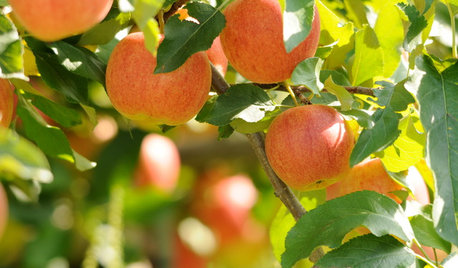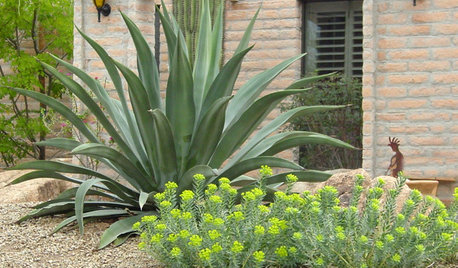first harvest-compost STINKS
GreenIvy
11 years ago
Related Stories

GARDENING GUIDESGet on a Composting Kick (Hello, Free Fertilizer!)
Quit shelling out for pricey substitutes that aren’t even as good. Here’s how to give your soil the best while lightening your trash load
Full Story
GREEN BUILDINGHow to Harvest Rainwater for Your Garden
Conserve a vital resource and save money by collecting stormwater for irrigation in a barrel or tank
Full Story
GARDENING AND LANDSCAPINGWorld of Design: 10 Home Gardeners Show Us Their Sweet Summer Harvests
From New York to Tokyo, these gardeners have turned their yards, terraces and rooftops into places of bounty
Full Story
GARDENING GUIDES10 Easy Edibles for First-Time Gardeners
Focus on these beginner-friendly vegetables, herbs, beans and salad greens to start a home farm with little fuss
Full Story
GARDENING GUIDESHouzz TV: Make a Worm Bin for Rich Soil and Happy Plants
A worm-powered compost bin that can fit under a sink turns food scraps into a powerful amendment for your garden. Here’s how to make one
Full Story
NORTHWEST GARDENINGPacific Northwest Gardener's March Checklist
Prepare for edible harvests and invite feathered friends to the garden — offering them slugs for lunch is entirely up to you
Full Story
HOUZZ TVHouzz TV: How to Make and Plant a Veggie Box
See how to start edibles from seed, then transfer the seedlings to a box on stilts to make harvesting more fun
Full Story
WINTER GARDENINGExtend Your Growing Season With a Cold Frame in the Garden
If the sun's shining, it might be time to sow seeds under glass to transplant or harvest
Full Story
CALIFORNIA GARDENINGCalifornia Gardener's July Checklist
Bite into tree-fresh apricots, inhale delightful garden perfumes and continue planting vegetables for a late-summer harvest
Full Story
GARDENING GUIDESSouthwest Gardener's September Checklist
Cool weather's coming, so prep for the first frost, swap out plants and get bulbs for spring in the ground now
Full StorySponsored
More Discussions






Celbrise
PeterK2
Related Professionals
Bridgetown Landscape Architects & Landscape Designers · Clark Landscape Architects & Landscape Designers · Stoughton Landscape Contractors · Wakefield Landscape Contractors · North Potomac Landscape Contractors · Pacifica Landscape Contractors · 07920 Landscape Contractors · Hawaiian Gardens Landscape Contractors · Three Lakes General Contractors · Belleville General Contractors · Evans General Contractors · Newington General Contractors · Spanaway General Contractors · Spencer General Contractors · Waldorf General ContractorsGreenIvyOriginal Author
PeterK2
3DinAz
GreenIvyOriginal Author
PeterK2
PeterK2
3DinAz
3DinAz
GreenIvyOriginal Author
machinist17
PeterK2
3DinAz
mr_yan
GreenIvyOriginal Author
3DinAz
PeterK2
mr_yan
GreenIvyOriginal Author